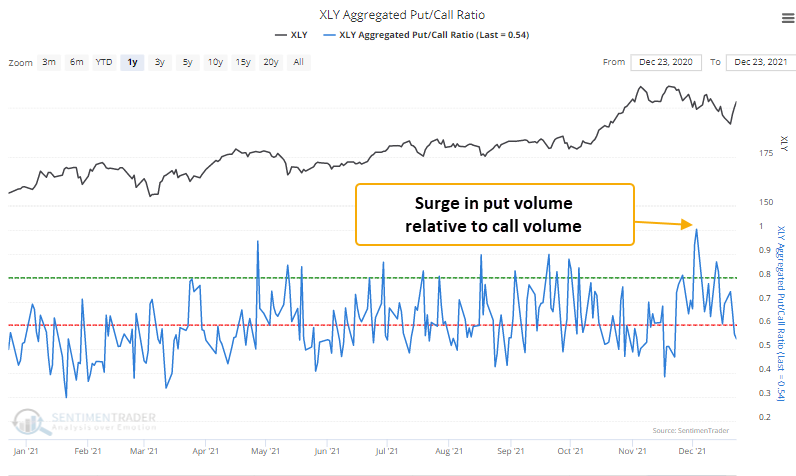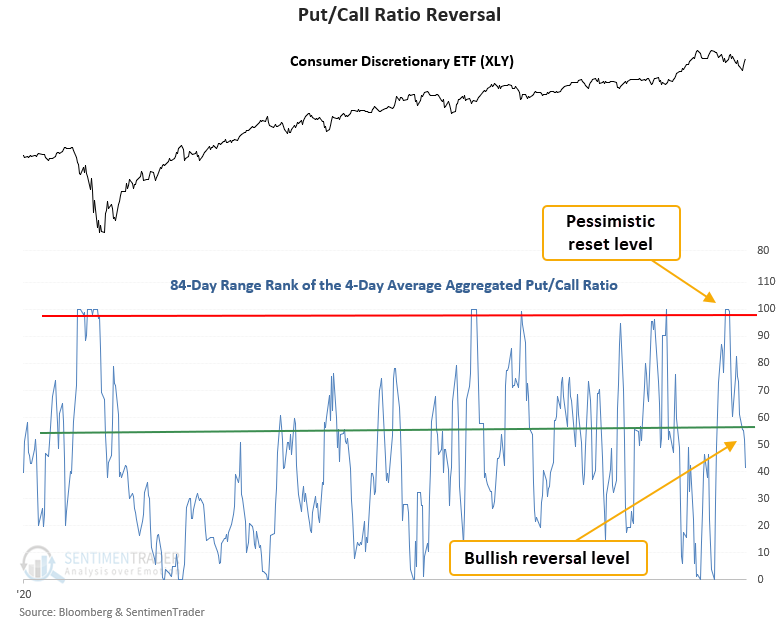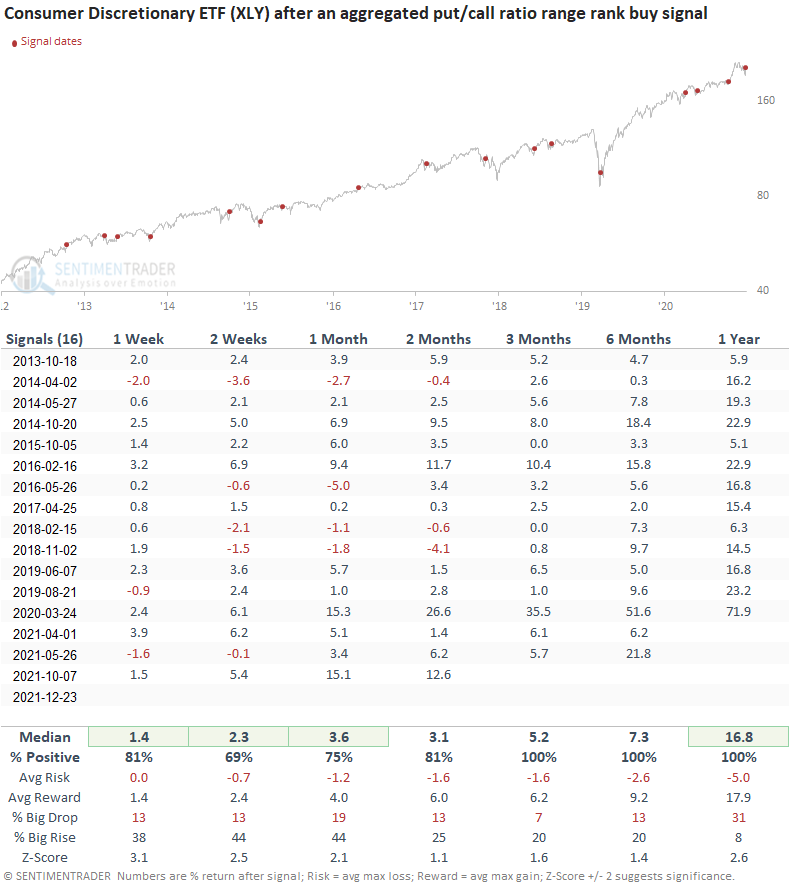Options volume shows discretionary stocks should rise

Key points:
- XLY constituent put volume increased relative to call volume
- The aggregated XLY put/call ratio has now reversed lower from an elevated level
- Consumer discretionary stocks have rallied 81% of the time over the next week after other signals
The aggregated put-call ratio as a contrary sentiment indicator
When investors are bullish on stocks, they buy call options to bet on rising prices. Conversely, when they are bearish on stocks, they buy put options to bet on declining stocks. The put/call ratio can be used as a contrary indicator to identify an environment where sentiment has become too pessimistic on the future direction of stocks. When opinions become too bearish, stocks tend to rally.
The aggregated put/call ratio indicator measures the summed options data for constituents of the index/ETF.

A trading model that identifies a reversal in the put/call ratio
I apply two derivative indicators to the aggregated put/call ratio because the series is volatile and can have an upward bias over time. The first is a moving average to smooth the erratic nature of the series. The second is a range rank that I apply to the average put/call ratio. The range rank indicator solves the problem of an upward bias in the put/call ratio. i.e., An extreme level today may not have been an extreme level in previous instances. As a reminder, the range rank measures the current value relative to all other values over a lookback period. 100 is the highest, and 0 is the lowest.
The put/call ratio trading model applies an 84-day lookback period to a 4-day average of the XLY aggregated put/call ratio. The pessimistic reset condition is confirmed when the range rank indicator crosses above the 99th percentile. A new buy signal occurs when the range rank crosses back below the 59th percentile. At the same time, the 5-day rate of change for the XLY ETF must be >= 2%. i.e., market momentum is positive.

Similar reversals in options volume have preceded gains 81% of the time
This signal has triggered 16 other times over the past 9 years. After the others, future returns and win rates were excellent across all time frames, especially the 1-week window. The aggregated ETF put and call volume data are new time series with a start date in 2013. So, history is limited to mostly bull-market environments.

What the research tells us...
When put volume increases relative to call volume, traders have become too pessimistic on the outlook for stocks. Stocks are likely to reverse higher when the pessimistic extreme reverses. Similar setups to what we're seeing now have preceded rising prices for the consumer discretionary ETF (XLY), with a 1-week win rate of 81%.

